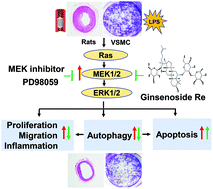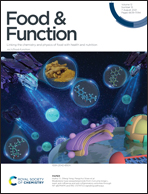Inhibition of the Ras/ERK1/2 pathway contributes to the protective effect of ginsenoside Re against intimal hyperplasia
Abstract
Neointimal hyperplasia is the major cause of carotid stenosis after vascular injury, which restricts the long-term efficacy of endovascular treatment and endarterectomy in preventing stenosis. Ginsenoside Re (Re) is a major active ingredient of ginseng having multifaceted pharmacological effects on the cardiovascular system, and is a potential treatment for restenosis. In this study, we demonstrated that Re treatment significantly inhibited vascular injury-induced neointimal thickening, reduced the intimal area and intima/media (I/M) ratio, increased the lumen area, and inhibited pro-inflammatory cytokines. In cultured A7R5 cells, Re inhibited LPS-induced proliferation and migration as evidenced by suppressed colony formation and shortened migration distance, accompanied by the downregulated expression of pro-inflammatory cytokines. Re promoted VSMC apoptosis induced by balloon injury in vivo and LPS challenge in vitro. Moreover, Re inhibited autophagy in VSMCs evoked by balloon injury and LPS as supported by reduced LC3II and increased p62 expressions. Suppression of autophagy with the specific autophagy inhibitor spautin-1 efficiently inhibited LPS-induced cell proliferation and inflammation and promoted caspase-3/7 activities. Mechanistically, we found that Re attenuated Ras/ERK1/2 expression in VSMCs in vivo and in vitro. The MEK1/2 inhibitor PD98059 showed similar effects to Re on cell proliferation, migration, apoptosis, and the levels of autophagy and cytokines. In conclusion, we provided significant evidence that Re inhibited vascular injury-induced neointimal thickening probably by promoting VSMC apoptosis and inhibiting autophagy via suppression of the Ras/MEK/ERK1/2 signaling pathway.



 Please wait while we load your content...
Please wait while we load your content...